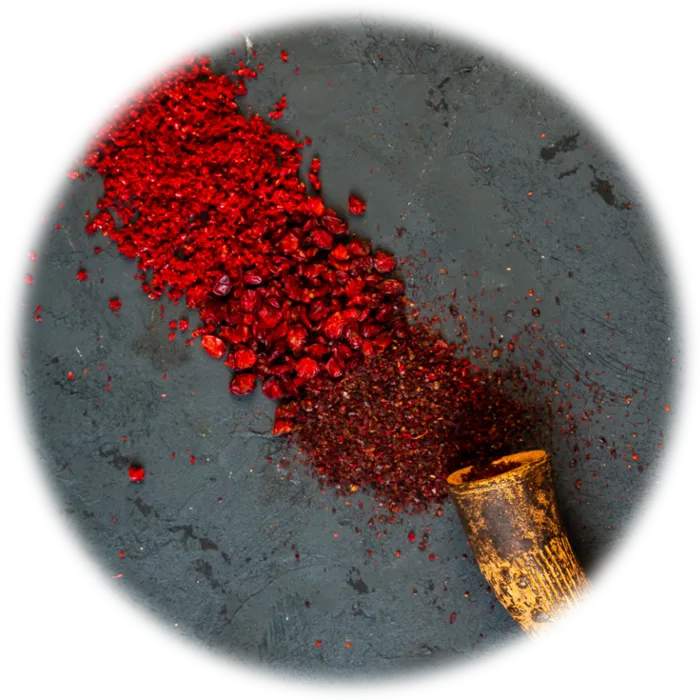
Nutritional properties of Indian Pepper
Energy :
250.00 Kcal / 100g
Category : Spices & Sauces
Group : Basic Spices & Condiments
Composition And Nutritional Value :
Indian pepper, commonly known as long pepper (Piper longum), is a species of pepper native to India and Southeast Asia. It contains piperine, which gives it its pungent flavor, along with other alkaloids, vitamins (like vitamin C and vitamin A), minerals (including iron, calcium, and magnesium), and fiber. It also has antioxidants that help combat oxidative stress and support overall health.
Health Benefits :
Indian pepper has several health benefits, including promoting digestion by stimulating the secretion of digestive enzymes. It has anti-inflammatory properties and may help reduce the symptoms of respiratory issues such as asthma and bronchitis. Additionally, it is believed to enhance circulation and metabolism and may assist in weight management.
Culinary Uses :
Indian pepper is used in both whole and ground forms in a variety of traditional dishes, particularly in Indian, Southeast Asian, and Middle Eastern cuisines. It can be added to curries, stews, soups, and marinades. Long pepper is often used in spice blends and is also incorporated into pickles, sauces, and beverages for its pungent, slightly sweet flavor.
Types :
The primary type of Indian pepper is long pepper, which has a more intense and complex flavor compared to black pepper. It is smaller and elongated, often used whole or ground. While it resembles black pepper, it has a different texture and is spicier, with a distinctive sweetness. There are no significant varieties within long pepper, but it can vary slightly depending on growing regions.
Shopping And Storage Tips :
When purchasing Indian pepper, look for whole, dark, and firm peppercorns, as they retain their flavor longer than ground pepper. Store long pepper in an airtight container in a cool, dry place to preserve its potency. Ground Indian pepper should be used within a few months for optimal flavor.

